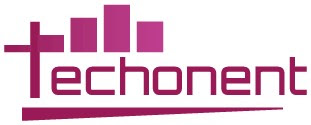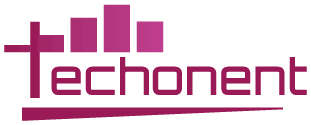
In the rapidly progressing, technology-driven company era today, a CRM (Customer Relationship Management) system is one, all-encompassing platform for sales, marketing, service, and operations. Yet, as the CRM market expands in 2025, organizations are faced with the new challenge of selecting a CRM that is both robust and tailored to their particular industry requirements.
No matter what you do in real estate, healthcare, e-commerce, or non-profit, using a one-size-fits-all CRM can leave capabilities unused, processes slow, and team acceptance low. So this book takes a different tack: helping you make an intelligent, industry-focused CRM choice that serves your purposes, grows with business development, and delivers authentic ROI.
Why Industry-Specific CRM Matters
Each industry functions differently, as do the customer engagement tactics. Real estate agents require built-in tools for tracking listings and scheduling property showings, whereas SaaS companies may focus on client onboarding and renewal pipelines. A healthcare provider must follow tight regulatory standards such as HIPAA, but an e-commerce business needs seamless inventory and order monitoring integrations.
Using a general CRM too often leads to difficult workarounds, costly modifications, or wasted features. Industry-specific CRMs, in contrast, are already configured with relevant templates, automations, and terminology, reducing your time spent on setup and decreasing the learning skill for your team.
Bottom line: the more customized your CRM is for your industry, the sooner you'll get results.
Step-by-Step Guide to Selecting the Right CRM in 2025
1. Identify Your Business Goals
Before you even consider software, determine your "why." What difficulties are you attempting to solve? What processes require streamlining? Are you looking to convert more leads into customers?
- How can we track and optimize the client journey?
- Automate your follow-ups and marketing initiatives.
- Centralize communication amongst departments?
Your goals will determine which CRM features are essential—and which ones are just nice to have.
2. Define Must-Have Features
Once you've established what you're trying to accomplish, choose the traits that will assist you in getting there. This is extremely different depending on your business and industry:
- Lead and pipeline management
- Contact and account organization.
- Email and marketing automation.
- Workflow automation and task assignment
- Custom dashboards and reports
- Mobile accessibility and remote usability
- Data security and compliance support
For example, a financial advisor may require client portfolio tracking and compliance documentation, whereas a retail company may prioritize POS and loyalty program connectivity.
3. Evaluate Integration Capabilities
Your CRM should not exist in isolation; it should integrate easily with the technologies you presently use. Think about:
- Accounting software (QuickBooks and Xero)
- E-commerce sites (Shopify and WooCommerce)
- Customer service software (Zendesk and Intercom)
Strong communication minimizes data duplication, manual entry, and the possibility of human error. Make sure that your CRM software offers native interactions and it is compatible with third-party automation solutions such as Zapier.
4. Look for Industry Experience and Specialization
Don't believe the vendor; look for evidence. Does the CRM vendor have success stories, testimonials, or case studies from businesses like yours? Some CRM offerings even after they have industry-specific editions or templates to help you get up and running fast.
A CRM designed expressly for your sector will speak your language, understand your processes, and make training for your team much easier.
5. Consider Ease of Use and Customer Support
Adoption means everything. Even the most powerful CRM is ineffective if your team does not use it. Look for :
- Simple navigation and customization options.
- Mobile apps for convenient access
- Onboarding assistance, training resources, and customer support availability
- user-friendly interfaces.
A clean, intuitive experience can cut down on training time and improve user satisfaction across departments.
6. Difference Between Pricing Models and Total Cost of Ownership
CRM pricing varies greatly depending on features, number of users, and support levels. Some CRMs provide free versions with restricted functionality, while others demand a monthly fee per user
- Setup and onboarding charges.
- Additional features or integrations
- The cost of scaling (adding more users or connections)
- Long-term support and maintenance.
Pro tip: Before you commit, take advantage of free trials or demos. This enables you to test the CRM in a real-world environment using your actual workflows.
7. Read Reviews and Ask Around
Before making a decision, look at sites like G2 and Capterra for original reviews. Sales pages frequently provide insights into usability, service quality, and long-term satisfaction that are not immediately apparent.
Better still, ask others in your industry what they are utilizing. Real-world recommendations might help you avoid typical mistakes and discover hidden gems.
Top CRM Picks by Industry (2025 Snapshot)
Here are some standout CRM platforms to consider based on your field:
|
Industry |
Recommended
CRMs |
|
Healthcare |
Salesforce Health Cloud, CareCloud |
|
Real Estate |
Follow Up Boss, LionDesk |
|
E-commerce |
HubSpot CRM, Zoho CRM, Drip |
|
SaaS /
Tech |
Pipedrive, Close.com, Monday Sales CRM |
|
Financial Services |
Wealthbox, Redtail CRM, |
|
Nonprofits |
Nonprofits |
These CRMs come bundled with functionality specialized to your company, like compliance-ready forms, donation tracking, sales forecasting, and more..
Tips for a Smooth CRM Rollout
Once you’ve selected your CRM, implementation is key. Here are a few final tips:
- Begin small: Roll out the CRM to one department or pilot team first.
- Invest in training: Ensure users understand how to get the most out of the system.
- Set key performance indicators (KPIs) such as usage, lead conversion, and client retention.
- Get input early. Regular check-ins can assist uncover difficulties and boost adoption.
Remember, CRM success isn’t just about software it’s about people and process.
Final Words
Choosing the best CRM for your sector in 2025 requires looking beyond showy features and concentrating on fit. A CRM adapted to your specific business model will save you time, increase productivity, and improve customer interactions from the start.
Take your time, ask appropriate questions, and involve your staff in the process. With the appropriate solution in place, your CRM will be more than simply a tool: it will be a game changer.

